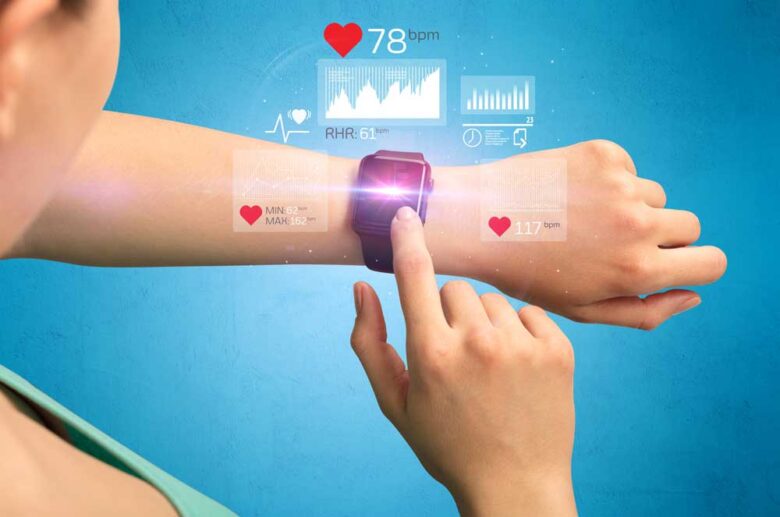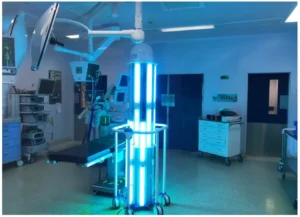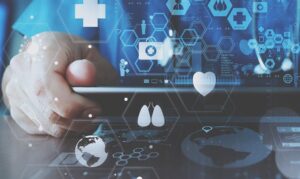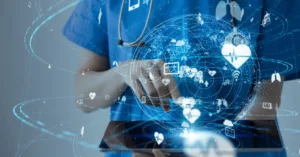Wearable medical devices are giving people a whole new way to manage their health. These devices are small, portable, and wearable, making it easy to track multiple health metrics in real time. Wearables are playing an increasingly important role in personal and preventive healthcare. They can track data such as heart rate, blood pressure, blood sugar levels, and physical activity. Digital health tools are getting better, cheaper, and easier to use, allowing people to better manage their health while communicating with their doctor.
Wearable Technology for Diabetes Management
Managing diabetes requires you to continuously monitor your blood sugar levels, which can be difficult and time-consuming. Today, wearable medical technology is making this task easier and less intrusive. A continuous glucose monitor (CGM) is a small sensor that is implanted under the skin and measures your blood sugar levels in real time 24/7. These devices send information to a smartphone or smartwatch, so users know when their blood sugar levels are too high or too low. Patients can use this information to make better choices about diet, medication, and exercise to better manage their diabetes and reduce the risk of complications.
Biosensors and Smart Clothing
Wearable technology has expanded beyond wristbands and watches to include smart clothing with built-in biosensors. These garments can record vital signs such as heart rate, breathing, muscle activity, and even body position. Athletes wear smart clothing to improve their performance and prevent injuries. In order to control their symptoms and maintain their safety, people with chronic illnesses dress smartly. For example, a smart shirt with an electrocardiogram sensor can monitor heart health at all times and alert healthcare providers if there is a problem. Integrating health monitoring into everyday life becomes easier with the addition of biosensors to regular clothing.
Wearable Blood Pressure Monitor
High blood pressure is a symptomless disease, but if left untreated, it can lead to serious health problems. In most cases, traditional blood pressure monitoring requires manual measurements in a clinical setting. But now people can monitor their blood pressure throughout the day without any setup. These devices usually look like a wristband or smartwatch. They use optical sensors to track blood flow and calculate blood pressure. By having patients measure their blood pressure regularly, they can better understand their condition and work with their doctor to make medication or lifestyle changes as needed.
Tools to Track and Improve Sleep
Many people don’t realize they have sleep problems, but sleep is essential to their health. Wearables that track sleep can help people monitor the duration, quality, and cycles of their sleep. Some devices can also detect if you snore, have symptoms of sleep apnea, or move unusually while you sleep. You can share this information with your doctor so they can determine if you have insomnia, restless leg syndrome, or obstructive sleep apnea. In addition, many devices give users specific suggestions for improving their sleep hygiene to help them sleep better and stay more alert during the day.
Wearables for Emergency Notifications and Fall Detection
People over 65 and those with certain health conditions are at greater risk of falling and experiencing emergency situations. Wearable medical devices that can sound an alarm and detect falls in emergency situations can help you stay safe in these situations. These devices can detect when someone moves suddenly, bumps into something, or stands completely still, and automatically send an alert to a caregiver or emergency services. Some models feature GPS tracking to facilitate the identification of individuals in need of assistance. These wearables guarantee immediate assistance or automatic alerts, providing comfort to users and their families.
Wearable ECG and Heart Rate Monitors
Individuals suffering from heart conditions like irregular heart rhythms or atrial fibrillation must constantly monitor their heart conditions. Wearable ECG devices are now available that allow people to take ECG measurements at home or on the go. These devices monitor the electrical activity of the heart and detect problems that could indicate serious issues. Some devices can be worn as a band-aid, while others are built into smartwatches. Users can take an ECG outside of the clinic, which can help detect dangerous symptoms early and provide data to a cardiologist.
Remote Monitoring and Telehealth Integration
Wearable medical devices are becoming increasingly important as telemedicine grows. Many wearable devices can now connect directly to telemedicine platforms, allowing doctors to view real-time health data during virtual consultations. This feature is especially useful for patients with chronic diseases or limited mobility who require constant monitoring but do not need to visit the doctor frequently. Wearable technology can help doctors make accurate diagnoses, customize treatment plans, and remotely monitor patients’ progress. Both patients and providers will have a better, more connected, and more personalized care experience.
New Developments in Wearables for Mental Health
Wearables are also starting to have an impact on mental health. New wearable technologies can measure stress levels, focus on mood changes, and suggest breathing or mindfulness exercises. Some technologies look at physiological indicators such as skin conductance and heart rate variability to understand a person’s emotional health. These tools can help people identify anxiety triggers, manage anxiety, and maintain better mental health. Wearable devices for mental health are still new, but they can be perfectly combined with traditional therapies to more easily monitor and measure mental health.
Conclusion
Wearable medical technology has completely changed the way we understand and care for our health. These devices are not just toys for fitness enthusiasts but powerful health monitors that can monitor our physical condition in real time. Wearable devices can do many things, such as treat chronic diseases, detect emergencies, promote mental health, and improve sleep quality. As technology, sensors, and artificial intelligence continue to develop, wearable devices will become increasingly powerful. As more people use wearable medical devices, they will become an important part of preventive, personalized, and connected healthcare.
FAQs
1. How can wearable devices help people with long-term conditions?
They can continuously monitor conditions, provide early warnings, and send data to doctors so that doctors can better treat conditions such as diabetes, hypertension, and heart disease.
2. Are wearable medical devices really the right choice?
Many current devices are very accurate, especially those that are FDA-approved. However, they should only serve as a supplement to professional medical advice and testing.
3. Can wearable technology detect medical emergencies?
Yes, some devices can detect falls, irregular heartbeats, or high blood sugar levels and automatically send alerts to healthcare providers or emergency services.
4. Are these devices only for the sick or elderly?
Not really. Wearable medical devices can help people of all ages and health conditions. They can improve overall health, sleep, stress management, fitness, and mental health.
5. Do wearables work with phones?
Most wearables work with smartphones via apps, allowing consumers to easily view and manage their health data and share it with their doctor if necessary.




